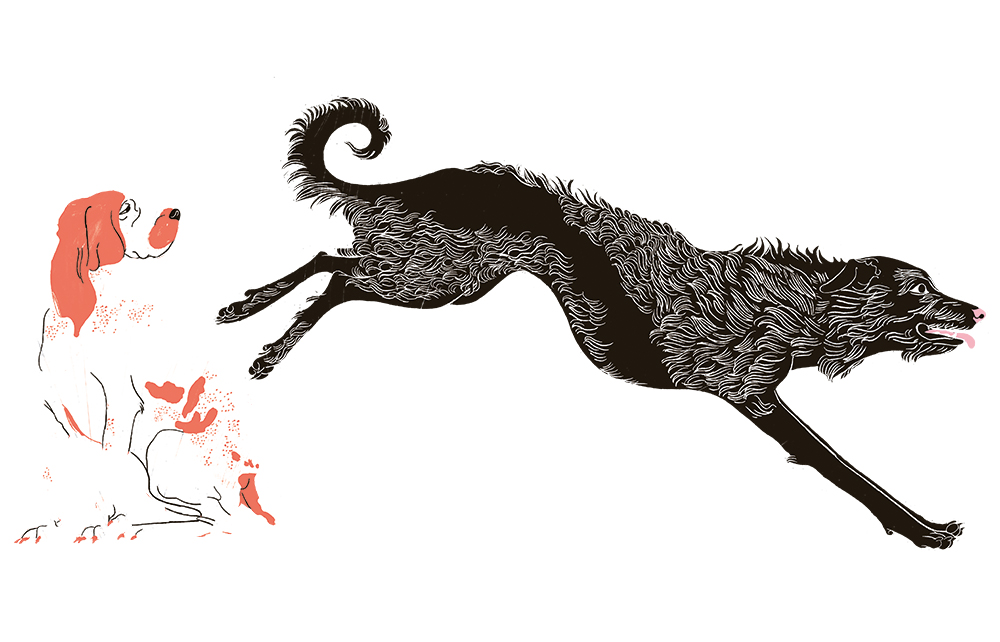It’s not often that my tastes are validated by Netflix, but Jonathan Stroud’s brilliant series about teenage ghost hunters, Lockwood & Co., is being turned into a series. If you haven’t read it, give it a go. The mordant talking skull alone is worth it. Stroud has already embarked on another series about a tough nut sharp-shooter, Scarlett, and her amiable sidekick, Albert Browne, who, handily, can read or sieve minds.
The Notorious Scarlett & Browne: Being an Account of the Fearless Outlaws and their Infamous Deeds (Walker Books, £7.99) is the second in the series, and the subtitle gives the gist. Here they carry out an impossible heist, complicated by ghouls. I say this even though I take a dim view of the underlying premise – that the bogey in the Britain where it all happens is the Faith Houses, an all-encompassing religious institution with sinister operatives. It’s a rubbish notion, given that Christianity has generally made us kinder and more humane, and I have limited patience with a heroine whose way of recharging is to meditate on a prayer mat, but it’s a rattling story. And in contemporary youth literature there aren’t many of those around.
Actually, here’s another. Lauren Wolk was shortlisted for the Carnegie Prize – admittedly not quite the accolade it once was – for Wolf Hollow, about a young girl growing up in rural Pennsylvania during the war and her efforts to save an unfortunate loner from the malice of an unscrupulous newcomer. The sequel, My Own Lightning (Penguin, £7.99), features the same heroine. When she’s struck by lightning it leaves her with a curious sense of how animals feel, including dogs, which have mysteriously disappeared from the neighbourhood. It’s about how mistaken our perceptions can be, and casts one of the villains of Wolf Hollow in an altogether different light. It is a celebration of family virtues and friendship, punctuated by greedy descriptions of delicious meals.
Michelle Paver’s Wolf Brother series, set in the Stone Age, comes to an end with Wolf Bane (Head of Zeus, £12.99), another cracking story about a young man, Torak, and his intense bond with a wolf, and with the feisty girl Renn, and their joint struggle with a demon in human form. The series is an astonishing feat, the deployment of what evidence we possess of a vanished time to create a compelling story. It also has an interesting account of a same sex relationship in that ancient world, done with the lightest touch.
For younger readers, Maggie O’Farrell’s The Boy Who Lost His Spark (Walker, £14.99), features a Nouka, a creature so adorable he’s merchandise-ready: a black ball of fluff with big green eyes. He’s a kind of house elf or goblin, except he lives outside on a hill, and works his funny magic on a boy with dyslexia and a bad attitude who’s been moved from the town to the boring countryside – all pleasingly illustrated by Daniela Jaglenka Terrazzini.
101 Dogs: An Illustrated Compendium of Canines (Big Picture Press, £16.99) by Nicola Jane Swinney, illustrated by Romy Blümel, describes dogs in words and pictures from Pekingese (‘the Peke likes to get his own way’) to the Rhodesian Ridgeback (‘its origins lie in the ancient dogs of the Hottentots’), with a handy summary of each breed’s attributes at the bottom of the page. There are notes on whimsical crossbreeds, including the ubiquitous Cockapoo.
If bats are a child’s thing, look no further than The Bat Book, written and illustrated by Charlotte Milner (DK, £12.99), in a pleasing format with lots of pictures and umpteen facts about bats, from their infinite variety (the bumblebee bat sounds adorable), through myths and misunderstandings, to ways of keeping the creatures safe.
Emma Carlisle’s What Do You See When you Look at a Tree? (Kew/ Big Picture Press, £12.99) is a whimsically drawn series of reflections on trees. But at the end it has some of the fascinating revelations that we’ve only recently become aware of, courtesy of botanists such as Peter Wohlleben, about trees’ astonishing social character and methods of communication (through networks of fungi).
For the long view, you can get no longer than Professor Raman Prinja’s The Future of the Universe: The Next Trillion Years and Beyond (Wayland, £14.99), a slim volume in which he describes what might become of the stars, constellations and galaxies over time – Orion will lose his head; the Plough will look more like a duck and star-making will end. He finishes with the ‘Final Acts of the Universe’, when, just as it began with a bang, it concludes with the Great Rip, when ‘everything is torn apart before vanishing from view’. It sounds excitingly apocalyptic.
This season there isn’t just one pleasing edition of Oscar Wilde’s fairy tales, but three. Penguin’s Little Clothbound Classics has a lovely version of The Star Child and Other Stories (Penguin, £9.99). Duckworth is republishing its 1952 edition of The Complete Fairy Stories of Oscar Wilde – nine from The Happy Prince and A House of Pomegranates – with delicious illustrations by Philippe Jullian and an afterword by Wilde’s son Vyvyan Holland (Duckworth, £12.99). But it’s hard to beat The Happy Prince and Other Tales (Bodleian Library, £20) for the illustrations by Charles Robinson, which are haunting, a little sinister and exquisite. ‘The Selfish Giant’ remains a perfect story, though I’m not sure children will take to all of them.
Finally, the admirable New York Review Children’s collection has a new edition of E. Nesbit’s The House of Arden (£9.99), and what a terrific story it is. The Mouldiwarp, a mole-like curmudgeon, isn’t quite as good as the Psammead of Five Children and It, but it too unlocks magic for Edred and Elfrida, two children in search of treasure. What a genius Edith Nesbit was.







Comments